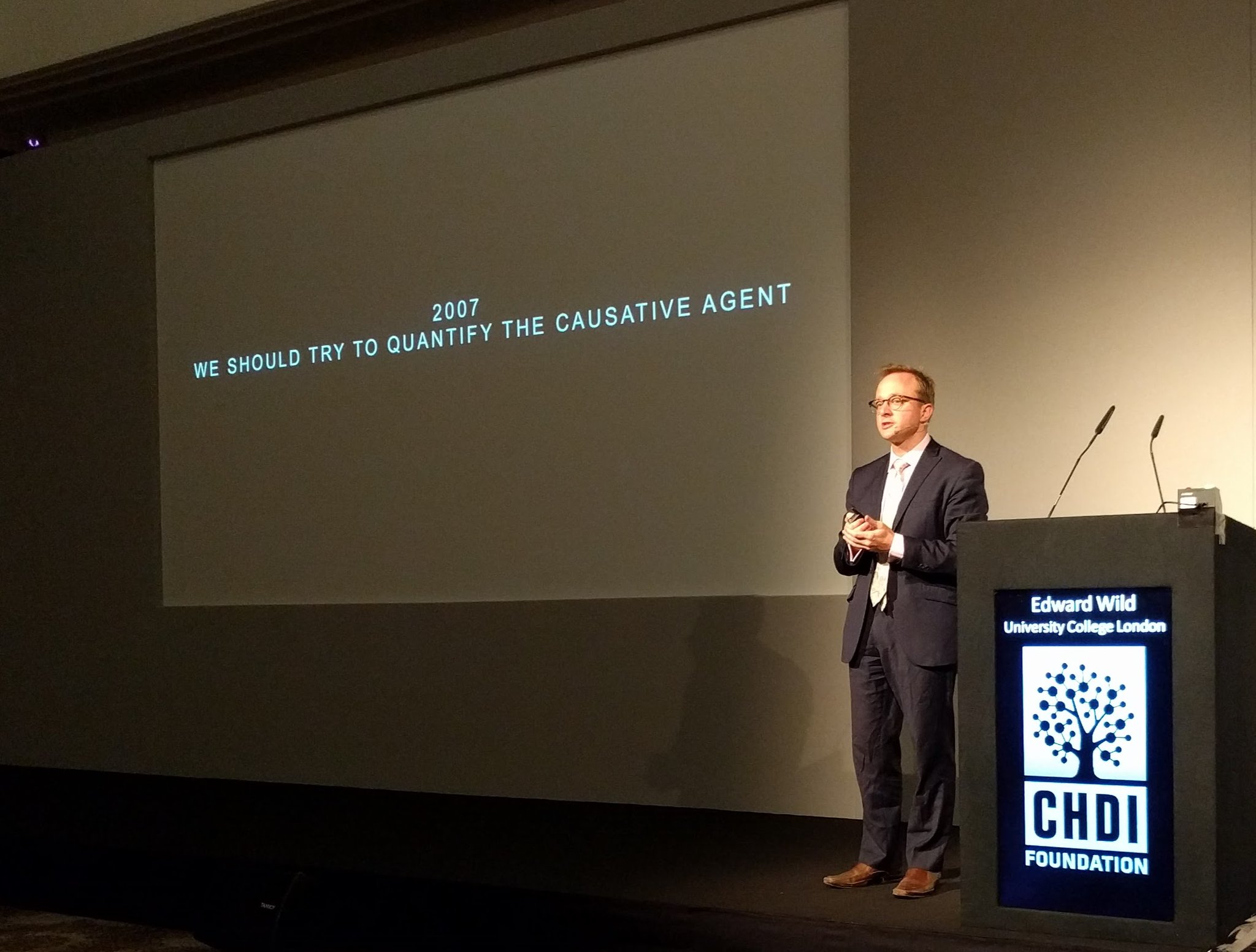
Huntington's Disease Therapeutics Conference 2017 – Day 2
HDBuzz summarises all the science from the 2017 Huntington's Disease Therapeutics Conference in Malta – day 2

Day two of the conference looks at some of the most promising approaches to fighting Huntington’s disease.
Huntingtin lowering therapies
Exciting session planned for this morning, as the conference discusses “Huntingtin lowering” approaches to treating HD.

The first talk is from HDBuzz’s own Ed Wild (University College London), who is interested in developing “biomarkers” for HD trials. A biomarker is a lab test that can be done to track the progression of a disease, or the effect of a treatment. Good disease biomarkers for HD would track the progression of the disease more precisely than simply looking at clinical measurements like movement abnormalities. Tracking the progression of HD is complicated and we don’t have any reliable tests for measuring it in the lab, especially in blood samples. Wild’s group has been developing tests to measure cellular debris released by sick and dying brain cells. As brain cells get sick and die in brain diseases like HD, they release their contents into the cerebrospinal fluid. Some of these debris leak into the blood, where very sensitive new tools allow researchers to measure them. During the course of other brain diseases – like Alzheimer’s and Parkinson’s – brain cell debris levels rise in the blood. Wild’s team has discovered a marker in the blood, released from sick brain cells, that increases consistently as HD progresses. Increasingly severe HD mutations leads to higher levels of brain cell debris in the blood, as does aging. This is exciting – for the first time we can track the health of brain cells from blood samples alone
Next up, Harry Orr (U. Minnesota), who works primarily in a disease called spinocerebellar ataxia 1 (SCA1). Like HD, SCA1 is caused by the expansion of a repetitive stretch of DNA with the sequence “C-A-G”. In SCA1 this genetic stutter occurs in a gene called “Ataxin-1”, not the HD gene. We can learn a lot by comparing how the same type of mutation, when it occurs in different genes, causes brain cells to become sick. Orr’s lab has shown that reducing levels of the mutant gene which causes SCA1 improves symptoms in mice. For many years, Orr’s lab has been using mouse models of SCA1 to try and discover interventions to slow disease. Orr’s lab is using antisense oligonucleotides (ASOs) to reduce levels of Ataxin-1 in the brain, similar to approaches being taken in HD. Comparing results between SCA1 and HD could help understand both diseases better.
Nicole Deglon (Lausanne U.) has worked for many years on huntingtin lowering approaches to HD therapy. She has a special interest in using engineered viruses to deliver huntingtin lowering tools into brain cells. New “gene editing” tools, including one called CRISPR/Cas9, allow researchers to modify DNA in adult cells. Deglon’s team has developed several gene editing tools designed to reduce levels of the HD gene. Using her viruses, Deglon is able to deliver these gene editing tools into the brains of HD mice, where they work very efficiently. One concern about gene editing tools is that the “scissors” that cut the DNA stick around forever, long after they’re needed. Deglon’s team has developed a very cool new trick to turn off the DNA scissors after they inactivate the HD gene. This is an exciting advance – it seems likely to make gene editing in the brain safer in the long-term. Her group has evidence that inactivating gene editing tools leads to less unintended cuts in DNA.
“A small molecule is a drug that could be taken as a pill. This would be a better way to take medicine, but so far no one has ever identified a small molecule which lowers huntingtin levels.”
The final speaker in this morning’s huntingtin lowering discussion is Liz Doherty from the CHDI Foundation. The foundation is pursuing a wide range of huntingtin lowering technologies Doherty describes the foundation’s search for a “small molecule” that will lower huntingtin levels. Unlike ASOs or the gene editing tools that Deglon described, a small molecule is a drug that could be taken as a pill. This would be a better way to take medicine, but so far no one has ever identified a small molecule which lowers huntingtin levels. Now CHDI is conducting an exhaustive search of over 130,000 different chemicals, hoping one of them will result in huntingtin lowering. In the first round of searching, they’ve identified 4 different chemicals that result in really robust huntingtin lowering in cells. Important to develop new ways to achieve huntingtin lowering, in case any unexpected concerns arise with other approaches like ASOs. So exciting to see the huge diversity of approaches to achieve huntingtin lowering at different stages of development.
For more information about our disclosure policy see our FAQ…


